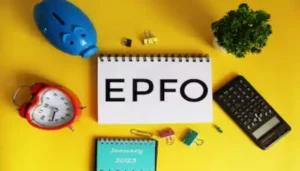In a major reform aimed at improving financial flexibility and ease of access for over 70 million subscribers, the Employees’ Provident Fund Organisation (EPFO) has liberalised its partial withdrawal rules.
Members can now withdraw up to 100% of their eligible Provident Fund (PF) balance under revised guidelines approved during the 238th meeting of the Central Board of Trustees (CBT), chaired by Union Labour Minister Mansukh Mandaviya.
EPFO 3.0: Key Changes to EPF Withdrawal Rules
The EPFO has consolidated its earlier 13 complex withdrawal categories into just three simplified groups:
- Essential Needs: Includes medical emergencies, education expenses, and marriage-related costs
- Housing Needs: Covers home purchase, construction, or repayment of housing loans
- Special Circumstances: Includes situations like natural disasters or job loss
Under these categories, members are now permitted to withdraw up to 100% of their PF balance, which includes both employee and employer contributions.
Previously, full withdrawal was only allowed in cases of retirement or after two months of unemployment.
Members could access 75% of their balance after one month of unemployment and the remaining 25% after two months.
The new rules significantly expand access and reduce waiting periods.
Minimum Balance Requirement Introduced
While the new rules allow full withdrawal, EPFO has introduced a safeguard to ensure long-term financial security.
Members must maintain a minimum balance of 25% of their contributions in the account at all times.
This provision aims to prevent complete depletion of retirement savings and encourage responsible financial planning.
Supporting Reforms and Digital Enhancements
Alongside the withdrawal rule changes, EPFO has launched several initiatives to modernize its services:
- EPFO 3.0: A digital transformation plan to automate and streamline PF services
- Doorstep Digital Life Certificate: Enables pensioners to submit life certificates from home
- Vishwas Scheme: Aimed at reducing litigation and resolving long-pending disputes
These reforms are designed to enhance the overall user experience and improve service delivery for EPFO members.
Implications for EPFO Members and Employers
The liberalised withdrawal rules are expected to benefit millions of workers, especially those in informal or contract-based employment who face financial uncertainty.
By simplifying access and reducing documentation requirements, EPFO aims to make the system more responsive to member needs.
Employers may also see improved employee satisfaction and retention, as workers gain greater control over their retirement savings.
However, companies will need to ensure compliance with the new rules and update internal HR policies accordingly.
Note: We are also on WhatsApp, LinkedIn, and YouTube to get the latest news updates. Subscribe to our Channels. WhatsApp– Click Here, YouTube – Click Here, and LinkedIn– Click Here.



